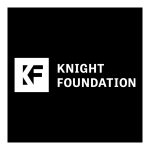Presidential Agenda Building and Policymaking: Examining Linkages Across Three Levels
A substantial amount of research in political public relations focuses on the progress of presidential candidates—the ways in which each chooses to communicate political messages, the manner in which media reacts, and the corresponding public opinion throughout the campaign process. In short, the instances of strategic communication that dot the presidential election process are well documented.
But what about the aftermath?

“My interest is in the broad dynamics behind political public relations—specifically the public relations efforts in politics that impact governing and campaigning,” said Spiro K. Kiousis, Ph.D. “Most of the research in my career has looked at campaigning; this particular study focused on the role of it in governing, which is an understudied area.”
Kiousis and colleagues conducted a study, which will appear in the International Journal of Strategic Communication, that looked at the role of strategic political communication in governing, examining the first six months of U.S. president Barack Obama’s second term. The researchers monitored multiple forms of presidential messages (such as political speeches), national news content, and policymaking activities to examine the extent to which political priorities across these three groups were positively associated.
“An underdeveloped area of political public relations research is examining and measuring the outcomes of public relations efforts,” Tiffany Schweickhart, Ph.D. student and contributor, said. “That was one of the novel aspects of our agenda-building project that will hopefully help to incite additional research in this area.”
An analysis of the results helped determine which tools seemed to be most effective in being linked with either news media coverage or policymaking activity. In this case, presidential news releases, blog posts, and presidential speeches were the most effective all-around strategic agenda-building tools for both media management and policymaking purposes.
“I’ve always been very interested in the role of news media, public opinion, and policymaking,” Kiousis said. “But there hasn’t been a lot of work that sort of looked at it from a strategic standpoint.”
“Historically, presidential speeches are thought of as important but questions about the strength of their influence emerge with the growth of online and social media tools,” Kiousis said. “The findings of this study confirm they are still important.”
Although some studies focus on singular media resources (e.g. blogs, news releases) with the purpose of identifying a linkage to media coverage and policymaking activity in the first place, Kiousis maintains that the studying the varying degrees of association between multiple information subsidies and object types are equally important.
“There’s not a consistent pattern,” Kiousis said. “Which means that, from a practical standpoint, some tools bear more investment from strategic political communicators than others.”
Agenda building is composed of three levels. The first two build from the idea that salient topics in public relations materials will permeate general news and media, and subsequently public opinion. The third level, also known as “network agenda setting,” is less explored, and refers to the presence of two elements already prominent in the media that, when linked, become significantly more memorable and newsworthy than they were on their own.
“This study was particularly unique in that, unlike other agenda-building analyses, it focused on how strategic communication can be employed to govern rather than win an election,” said Jordan Neil, a Ph.D. student and contributor. “That said, the purposeful co-occurring of specific issues and attributes by candidates to increase the saliency of their message is certainly present throughout the primaries.”
Current political examples include most of the 2016 presidential candidates who align themselves with a particular issue, and consequently connect it to a topic of national conversation and debate.
“The candidates who are able to link themselves with issues they feel they’re strong on are the ones that seem to be doing well at this point,” Kiousis pointed out. “Trump raising the issue of immigration has brought it into public debate. He by himself is prominent and immigration by itself is prominent. I think that’s another element that is important, the extent to which strategic communicators are able to link those elements together.”
“This type of relationship can have major implications for both foreign and domestic policy,” he said.
Category: Research News
Tagged: Spiro Kiousis
Subscribe to our News Digest


